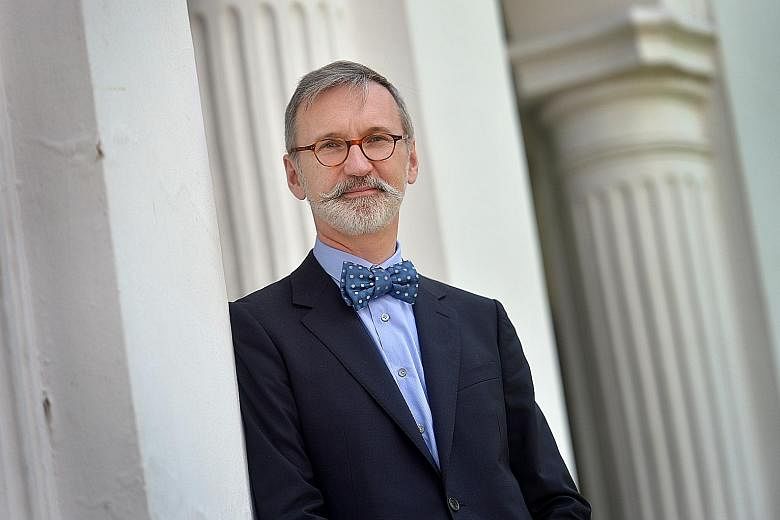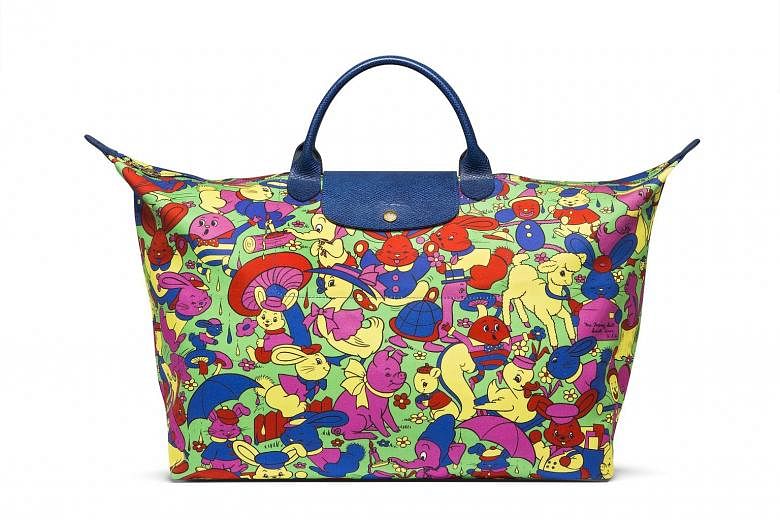Luxury brand Longchamp's history is steeped in French heritage, but few know about the brand's affinity with the Asian arm of their business.
"A sizable 25 per cent of our business comes from Asia and 50 per cent of our customer base is Asian," said chief executive officer Jean Cassegrain, 51, in an exclusive interview with The Straits Times while he was in Singapore on a market visit last week.
Describing the South-east Asian consumer as a "mature luxury shopper", he said the brand is looking to increase penetration into the region to cater to its loyal customer base.
"Customers here are well educated on luxury, perhaps more so than in China and Taiwan, where luxury consumers are more in discovery mode. It just shows the enormous opportunity South-east Asia still holds for us to grow our business. We are far from reaching our potential in Asia."
Indeed, Longchamp's Asian connection goes back a long way - it opened its first flagship store in 1979 in Hong Kong instead of Paris, as one would expect.
Its first dedicated store in Paris opened in 1988, while its newest flagship store along the famed Champs-Elysees opened in 2014.
Along with his parents, brother and sister, Mr Cassegrain makes up the second- and third-generation honchos of the traditional family-owned business.
His grandfather, the senior Jean Cassegrain, founded the brand in 1948 as a leather goods company making coverings for pipes, as a way to carry on his great- grandfather's tobacco business.
Sixty-eight years later, Longchamp is a fashion accessories powerhouse, directly operating 300 stores in 24 countries worldwide.
Including its franchisee stores, it operates in 80 countries and employs about 3,000 people - half of whom are based in France.
Last year, it made €566 million ($862 million) in global sales.
As one of the few family-owned European luxury brands left in a landscape dominated by luxury goods conglomerates such as Kering and LVMH, Longchamp has for long had the luxury of growing its business on its own terms - without having to answer to stakeholders.
"Staying privately owned has helped us create key competitive advantages such as choosing where and when to open our stores and keeping the bulk of our manufacturing in France," Mr Cassegrain said.
"Manufacturing our own products and sourcing the right leather give authenticity to the brand in an environment where many brands sell handbags, but few actually make them."
Keeping true to the brand's chic French aesthetic is what has made its Le Pliage bag a global fashion icon and has fuelled the brand's 13 per cent year-on-year growth in the past 15 years.
The sturdy nylon and leather trimmed bags - named after the French verb "to fold" - have become the brand's bestseller since its introduction in 1993.
Mr Cassegrain said: "In the luxury market, you have to lure customers to buy another handbag that they may not necessarily need.
"But for us, our asset is our product. Our customers enjoy using our bags because they are designed to be used - not just sit on a shelf."
For now, the brand is looking to focus its energy on pushing its ready-to-wear line for women that was launched in 2006 - starting with the renovation and expansion of its stores to better accommodate the ready-to-wear collections.
Keeping in line with the family's affinity for art and artists - Mr Cassegrain requested this interview to be held at the Singapore Art Museum so he could take a curator's tour before flying to Jakarta the same day - Longchamp stores across the world will also include surprise elements and artist collaborations to keep them looking different.
Its original Rue Saint Honore flagship in Paris will almost triple in size from 250 to 700 sq m by October and offer separate stores for men and women.
Closer to home, the Longchamp store at Marina Bay Sands will be seeing similar expansion - doubling in size by the end of next month - to better showcase the brand's ready-to-wear collections.
Its new focus - combined with its successful transition into the world of social media with brand ambassador and fashion maven Alexa Chung - shows how far Longchamp has come from making pipe covers in Paris.
"Keeping it in the family means we are able to do things that are good for us in the long run," said Mr Cassegrain when asked if he thinks the family business model is the secret to the brand's success.
"Staying relevant in the digital age doesn't mean losing our heritage.
"Our family business is something we are proud of and have no plans to change."



